Enjoy the scrollable trail, or hit the banner below for a more immersive experience.

The 54th Regiment Massachusetts Volunteer Infantry Plaza
William St. and Acushnet Ave.
On this site was the local recruiting station for the 54th Regiment. The first regiment of color commissioned in the North. Dedicated on February 12, 1999; this plaza commemorates the contribution of the Civil War’s 54th and the 55th Regiments, the 5th Calvary and the Navy men of color from New Bedford. A monument is planned for the future.

Liberty Bell Plaque East wall of former Bay Bank
Purchase and William Streets
A Liberty Hall once stood on this site. Inside the Hall was a bell which, during the 1850’s and 60’s was used to warn runaway slaves that the U.S. Marshals were approaching. Aaron Childs, an African-American, was one of the largest contributors to the bell.

Lewis Temple Memorial – 613 Pleasant Street – In front of the New Bedford Public Library
Born about 1800 in Richmond, Virginia, Lewis Temple was a former slave who had acquired blacksmith skills by the time he came to New Bedford sometime before June 1829. By 1834 he was elected vice president of the New-Bedford Union Society, founded by men of color the year before and the city’s first antislavery society. In his blacksmith shop on lower Walnut Street, Temple invented the toggle iron, a harpoon with a two-part point that once lodged in a whale’s flesh, swiveled to embed itself. The toggle iron vastly increased the efficiency of the whale hunt and was the industry’s only significant mechanical improvement in the 1800s, but Temple never sought a patent for the invention.
Lewis Temple was in the process of building a new blacksmith shop on lower School Street when he took a fatal fall on an unfinished sidewalk in 1854. Three years later, the city acknowledged responsibility for this “defect in the highway” with a cash award to Temple’s widow. Temple’s son and namesake took up his father’s trade with the firm of Dean and Driggs on Walnut Street. Sculptor James Toatley used a photograph of Lewis Temple Jr. as the basis of this sculpture, created and installed in 1987.

Frederick Douglass Plaque – Inside New Bedford Free Public Library, 613 Pleasant Street
This monument is dedicated to Frederick Douglass and his wife Anna who escaped slavery by the underground railroad and made New Bedford their home for five years 1838-1843. Two of their children were born here, Rosetta (1839) and Lewis (1840). Dedicated on October 17, 1996, this monument commemorates the 100th anniversary of his death in 1895. This project was sponsored by the City of New Bedford and the New Bedford Chapter of the NAACP.

Frederick Douglass Monument
William Street entrance to City Hall lawn
This monument is dedicated to Frederick Douglass and his wife Anna who escaped slavery by the underground railroad and made New Bedford their home for five years 1838-1843. Two of their children were born here, Rosetta (1839) and Lewis (1840). Dedicated on October 17, 1996, this monument commemorates the 100th anniversary of his death in 1895. This project was sponsored by the City of New Bedford and the New Bedford Chapter of the NAACP.
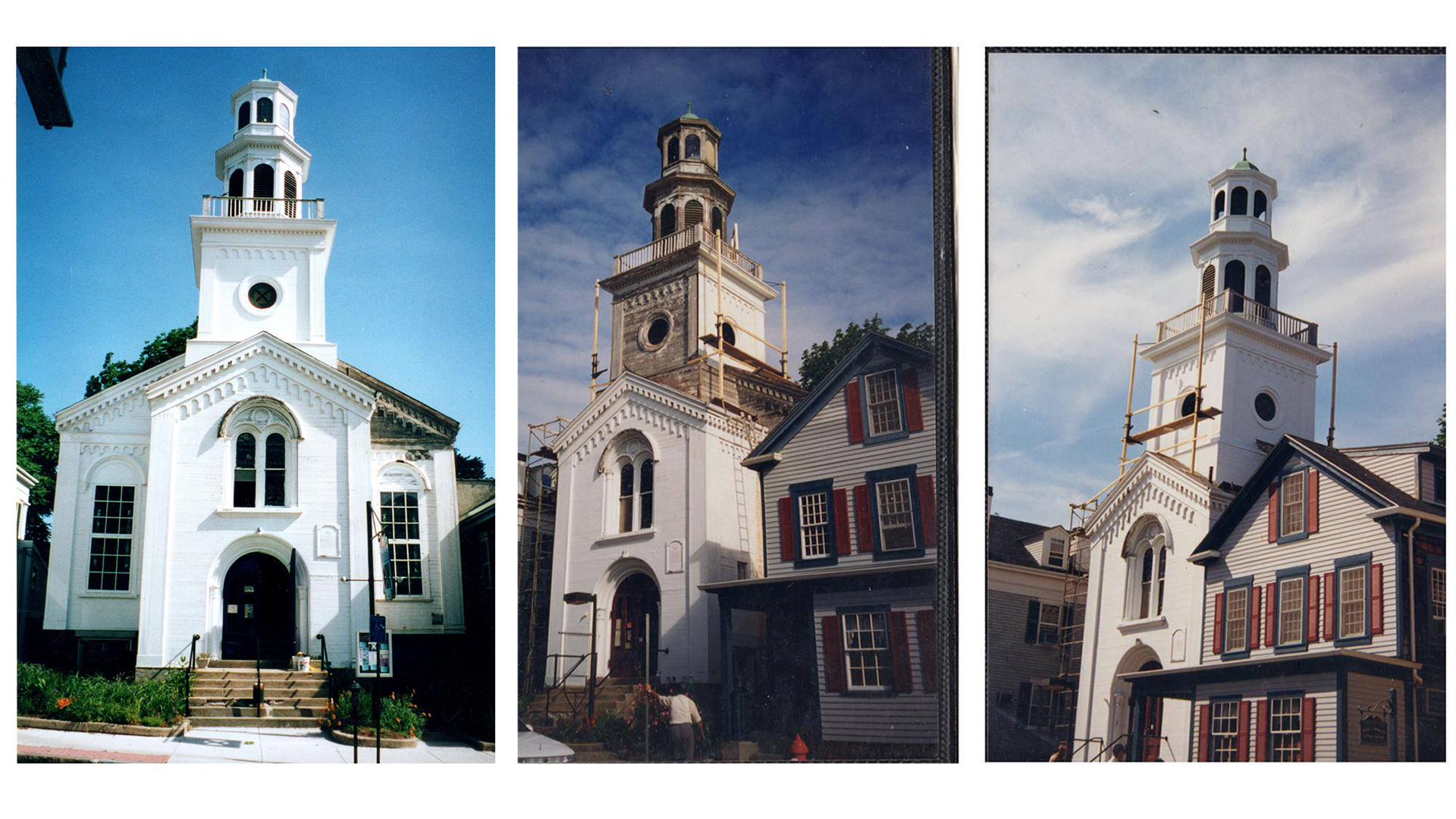 (Former) Frederick Douglass Memorial AME Zion Church –
(Former) Frederick Douglass Memorial AME Zion Church –
169 William Street – Gallery X
The roots of New Bedford’s African Methodist Episcopal (AME) Zion congregation probably extend to the late 1830s, when its founder separated from the local African Methodist Episcopal Church to form “a distinct organization . . . to the general benefit of the colored people.” Then called “Zion’s Colored Methodist Episcopal Church,” the congregation initially met at a former schoolhouse on South Second Street and later at the home of Alexander Devol. Frederick Douglass was made an exhorter in this church and then licensed as a lay preacher by 1840. At the urging of the Reverend Thomas James, himself an escaped slave, Douglass first told the story of his escape from slavery before a white audience in this church. It was that address that launched Douglass’s career in antislavery activism.
In the 1840s, the first AME Zion congregation members may have joined the AME Bethel church, organized in 1843. By 1850, however, fourteen men and women of color left the AME Bethel to revive the AME Zion church. The church was first housed in a sanctuary at the corner of Eighth Street and Mechanics Lane and then in the Middle Street home of Alexander Devol, a fugitive slave. In 1851 the church moved to a new home on Elm Street, west of County Street, and in date, this William Street structure was built for the congregation.
In the twentieth century, many New Bedford people of West Indian descent attended this church, renamed the Frederick Douglass AME Zion church in the 1930s. The building was a church until the congregation disbanded in 1995, and it now houses Gallery X, an art gallery.

Nathan and Polly Johnson House – 21 Seventh Street
Nathan and Polly Johnson were among the most active abolitionists in New Bedford before the Civil War. Nathan Johnson (1797-1880) came to New Bedford about 1819, but his place of origin—as well as his status, slave or free—is not definitely known. He married Polly Mingo Durfee (1784-1871) of nearby Fall River in 1819, and by 1826 the couple was probably living in what is now the rear section of this house, which may then have faced Seventh Street. In the mid-1850s, Polly (managing the family affairs while her husband was in the West) appears to have turned the old house to the south and moved it back to make room for a new Greek Revival house with fashionable Italianate detail. These joined houses, designated a National Historic Landmark in 2000, serve as headquarters of the New Bedford Historical Society, founded in 1996 to document, interpret, and celebrate the lives of people of color in this region.
Nathan Johnson assisted fugitives from southern slavery as early as 1822. His 21 Seventh Street home harbored several escaped slaves, including Frederick Augustus Washington Bailey, whom Nathan Johnson renamed Frederick Douglass in his first days of freedom. Johnson was a delegate to many of the early nationwide conventions of free people of color and involved himself in nearly every local political activity related to people of color. He and his wife were successful caterers, confectioners, and property owners: by the mid-1840s, the former Quaker meetinghouse just north of this house, the two-story house that once stood just south of it, and 96 Spring Street, behind the meetinghouse, belonged to them. In 1849 Nathan Johnson left the city with his stepson and brother to seek prosperity in California. He remained in the West for 24 years. Johnson returned to his New Bedford home within two years of his wife’s death and died in the basement of 21 Seventh Street in 1880.
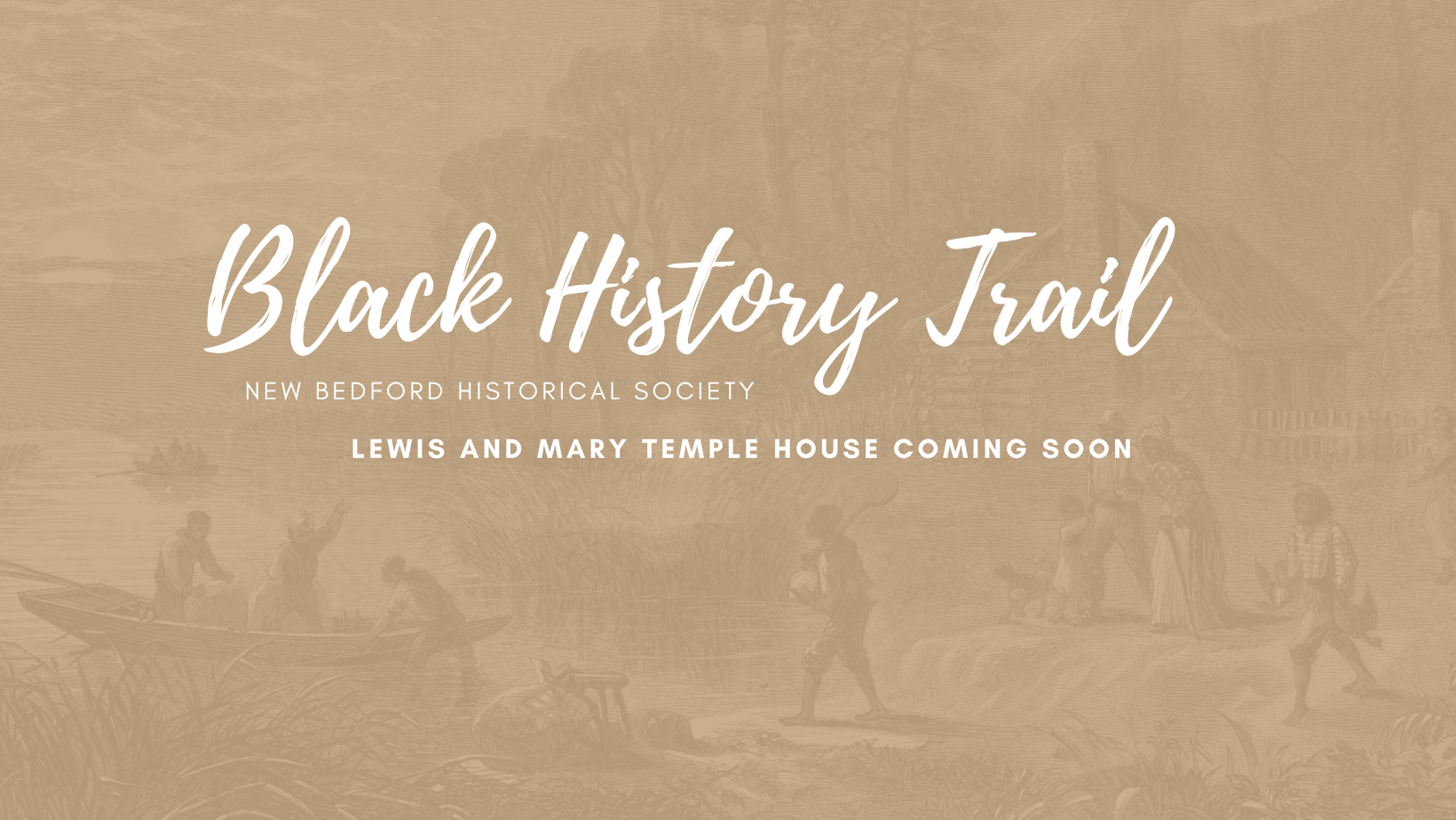
Lewis and Mary Temple House – 54 Bedford Street
This house, built in the 1820s, was the home of Lewis and Mary Temple and their family from the 1830s until 1849. Married in June 1829, the Temples had three children—Lewis Jr., born August 1830; Nancy, born May 1832; and Mary, born April 1834. All were born in this house. The two girls died in 1841 and are buried with the rest of the family at Rural Cemetery. His marriage to Mary Clark made Temple part of the extended Clark-Bush family, whose members, some of whom were free people of color, came from the Washington, D. C., area to New Bedford between the late 1820s and mid-1850s. Some of the descendants of this large family are New Bedford residents to this day.
Before the Civil War, the Bedford Street area was one of three neighborhoods in which people of color tended to live. Nathaniel Borden, who helped operate a boardinghouse for colored seamen in New York City, precipitated a controversy over equal admission to the local New Bedford Lyceum lecture series in the 1840s. He lived at 30 Bedford Street, later the site of Morse Twist Drill. Next door, on the corner of South Sixth Street, were Marshall and Cynthia Potts, both active in antislavery work in that decade. In the house west of Temple’s was the family of Rhode Island-born Cuffe Lawton; his sons Frederick, Francis, and Edward were all mariners, and Edward was an antislavery activist as well. Diagonally behind these homes was the home of William Piper, who is probably the “very fatherly old man, who had been a slave in Alexandria,” who assisted John S. Jacobs in his flight from North Carolina slavery. The Bailey and Briggs families lived just west on Allen Street; the escaped slave William Henry Johnson lived just south on Wing Street. The neighborhood also included African-Indian and Cape Verdean families and was the site of a Cape Verdean club and funeral parlor in the twentieth century.
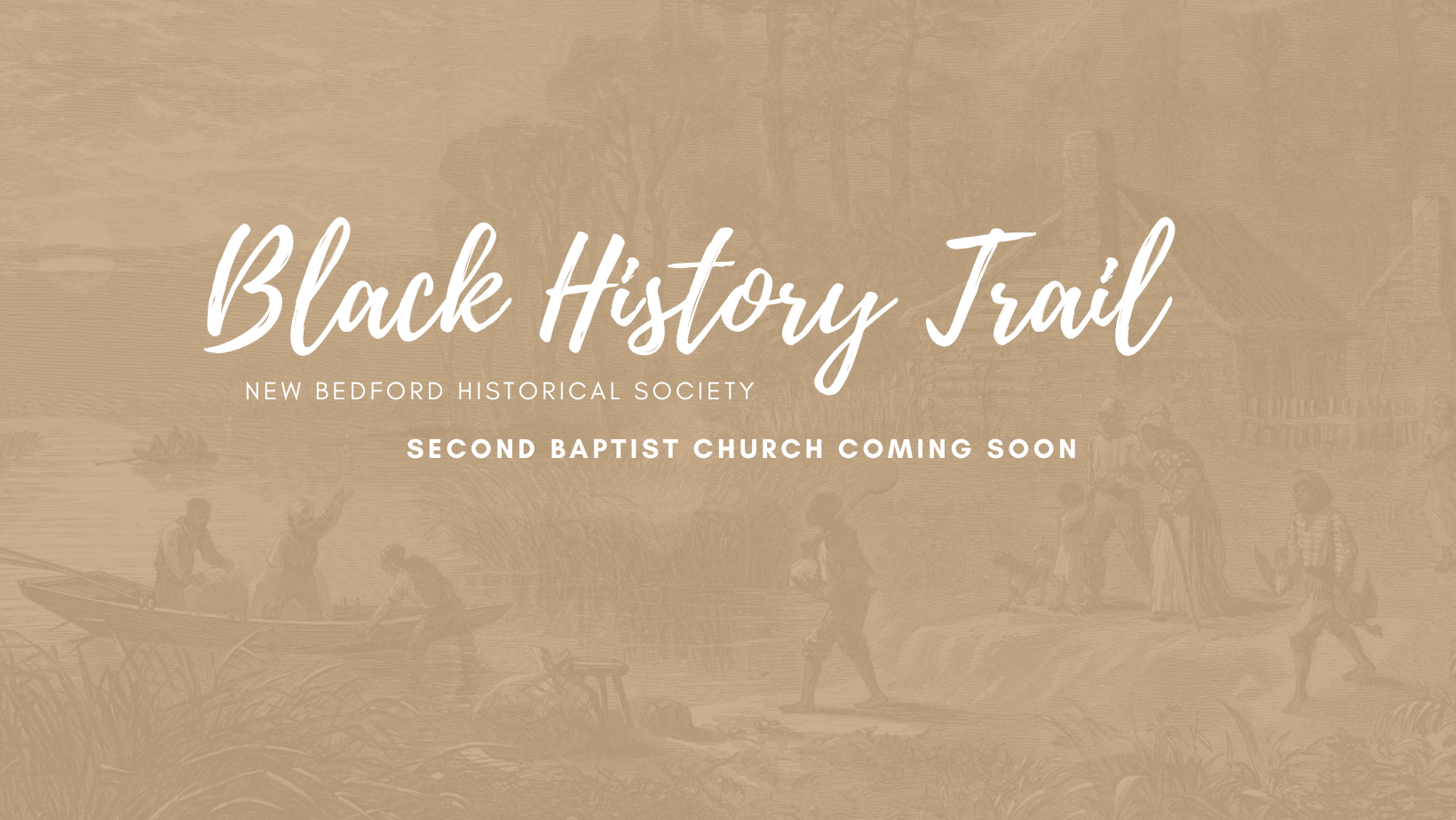
Second Baptist Church Site – 205 Middle Street [near Danny’s Auto Body parking lot]
One of the many churches organized by people of color in 1800s New Bedford, the Second Baptist Church was created in 1844 by the withdrawal of eighteen people from the Third Christian Church, which, as the African Christian Church, was the oldest congregation of color in the city. The church existed until 1895, when it and the Salem Baptist Church merged to form Union Baptist Church. Dedicated in January 1845, this Middle Street structure is the oldest African American church building in the city.
The early pastors of Second Baptist, and many of its congregants, were antislavery activists. Its first pastor, Thomas U. Allen, had been a slave in Richmond, Virginia, who had escaped to the North by the spring of 1844; when the fugitive Leonard Black arrived in New Bedford in the mid-1840s, local abolitionists sent him to Allen for assistance. The church’s second pastor, Edmund Kelley, was a Tennessee slave whose owner permitted him to leave the state in order to preach. Kelley never returned, and with the assistance of New Bedford’s Joseph Grinnell he purchased the freedom of his wife and children and arranged for their move to New Bedford. When Kelley left the Second Baptist pastorate in 1851 the Reverend William Jackson, an associate of Underground Railroad activist William Still who had been jailed in Philadelphia for assisting in a fugitive escape, was called to the position. Jackson is documented to have assisted fugitives in New Bedford as well. Reverend Jackson later served as chaplain to the Massachusettts 54th Regiment during the Civil War. Among the congregants at Second Baptist were the family of William Bush, a boardinghouse keeper who sheltered and assisted fugitive slaves, and William Piper, who aided the fugitive John Jacobs after his escape from slavery.

First Baptist Church – 149 William Street (at City Hall Square) est. 1829
The freedom-loving Baptists of this church (one which traces it parish roots to the Mayflower) took an early stand against slavery with the Reverend John Girdwood preaching against the ills of slavery. As early as 1814, Mr. Isaac Thomas, an African-American, was baptized into the church membership. Like their founding fathers, the members of First Baptist believed in freedom of expression for all and the church was a site of many abolitionist meetings and speeches. A city landmark, the steeple of First Baptist is one of the original four steeples depicted in the 1853 City Seal of New Bedford.
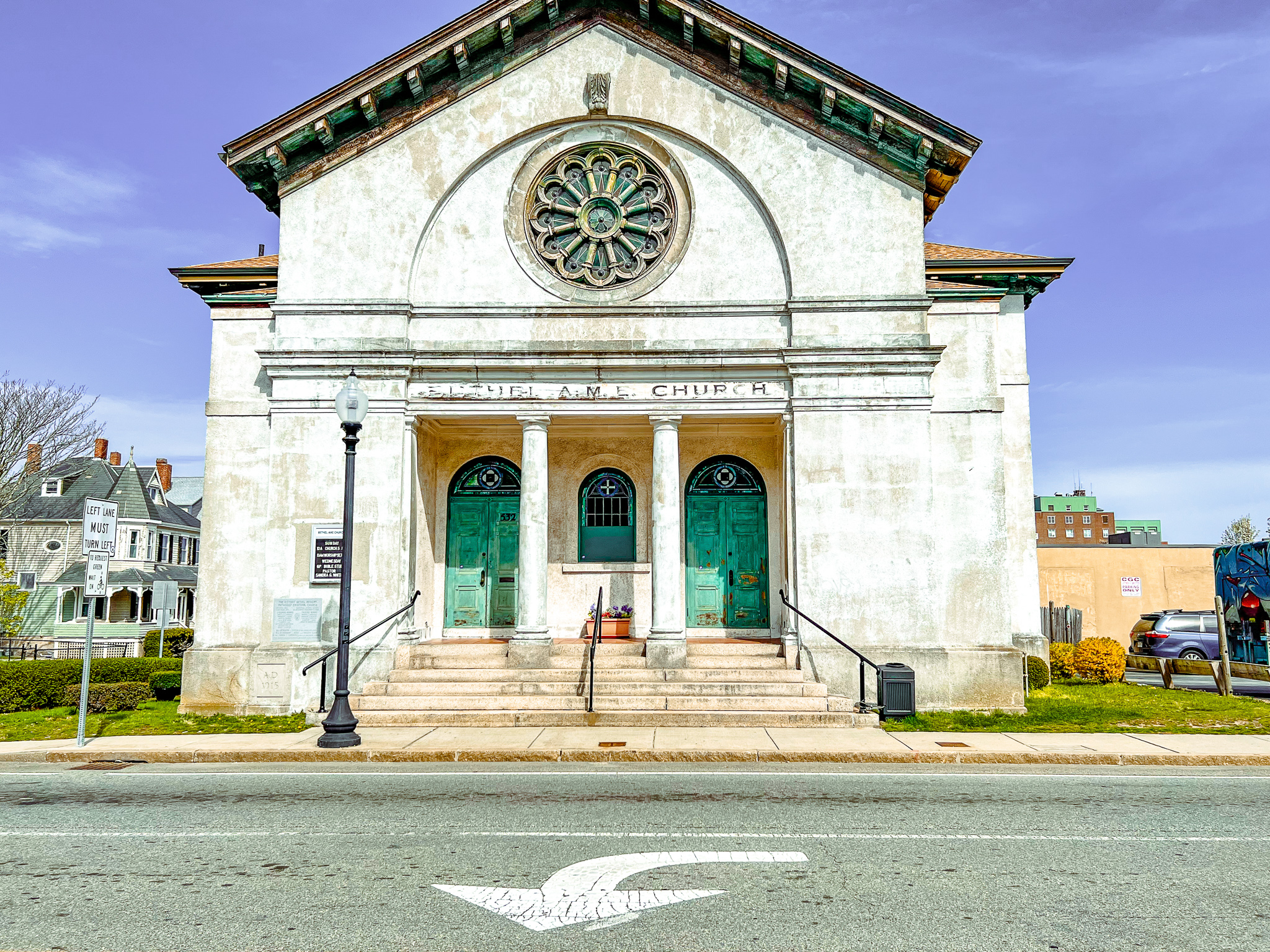
Bethel African Methodist Episcopal Church – 532 County Street, corner of Kempton Street
Organized in 1843, the Bethel AME congregation has always worshipped on County Street. Its first church, built that year, burned before October 1855 and was rebuilt. The church remained active until 1973 when it was acquired and demolished as part of the New Bedford Redevelopment Authority’s urban renewal project. The church is now housed in the former Christian Science church building on this site. Within this church, the New England Conference of the AME Bethel was organized, and a mural in its basement depicts the church’s history in America.

Sergeant William H. Carney Homestead – 128 Mill Street
Built in 1850, this dwelling was the home of the family of William H. Carney Jr. (1840-1908) from 1896 until the death of his only daughter Clara in 1939; it had earlier been the home of his Carney’s Susanna and her parents, John W. and Clara Williams, who came to New Bedford from Virginia in the mid-1850s. Carney, an escaped slave and the son of an escaped slave, appears to have followed his father from Norfolk, Virginia, to New Bedford after 1856. By March 1863 the younger Carney had enlisted in the Fifty-fourth Regiment of the Massachusetts Volunteer Infantry. For his heroism in carrying the regiment’s colors to and from the parapet of Fort Wagner, Carney became the first American of color to receive the Congressional Medal of Honor, in 1900. Eight years later Carney was buried from this house, and his funeral was attended by local, state, and national figures.
The Carney house was purchased by the Martha Briggs Educational Club, after the death of Clara Carney, a music teacher. It continues to serve as the club’s headquarters.

Sergeant William H. Carney Memorial Academy – 91 Summer St., near the corner of Mill Street
Formerly the Clarence A. Cook School, this public elementary school was renamed in Sergeant William H . Carney’s honor in the early 1970s.

William H. Carney Lodge #200 – 159 Mill Street
This lodge of the Improved Benevolent Protective Order of Elks of the World was founded in 1915.

Union Lodge No. 4, F. & A. M. – 308 Cottage Street at the corner of Mill Street
Founded in 1857, Union Lodge is the oldest African American fraternal organization in New Bedford. One of its founders was Rhode Island-born Henry O. Remington, New Bedford soap manufacturer and antislavery activist. In 1859 both the Lodge and Remington raised money for the perpetual care of the gravesite of Daniel Drayton, a white sea captain who had attempted to deliver seventy-seven slaves from Washington, D.C., to the free states but was captured and imprisoned for more than four years. Drayton came to New Bedford several times after his release and visited “his old friend,” black Underground Railroad activist William Bush, the evening before taking his own life at the city’s Mansion House in 1857. He is buried in New Bedford’s Rural Cemetery.
The lodge is a member of the M. W. Prince Hall Grand Lodge, Fraternal and Prince Hall Freemasonry Masons, jurisdiction of Massachusetts, Inc.

United House of Prayer for All People – 419 Kempton Street
The first church on this site was organized in December 1921 by Charles Manuel Grace, a native of the Cape Verdean island of Brava who emigrated to New Bedford in 1903. A self-proclaimed bishop and a flamboyant, charismatic presence, he was lovingly known as “Sweet Daddy” Grace. During the 1930s, Grace began a ministry in Harlem and began to set up other churches throughout the country; at his death in 1960 the House of Prayer’s membership was believed to exceed three million people.
The first church was replaced by a larger structure in 1951, itself demolished in 1994 to make way for a still larger church, financed entirely in cash. The church’s history can be read on the stained-glass windows inside.
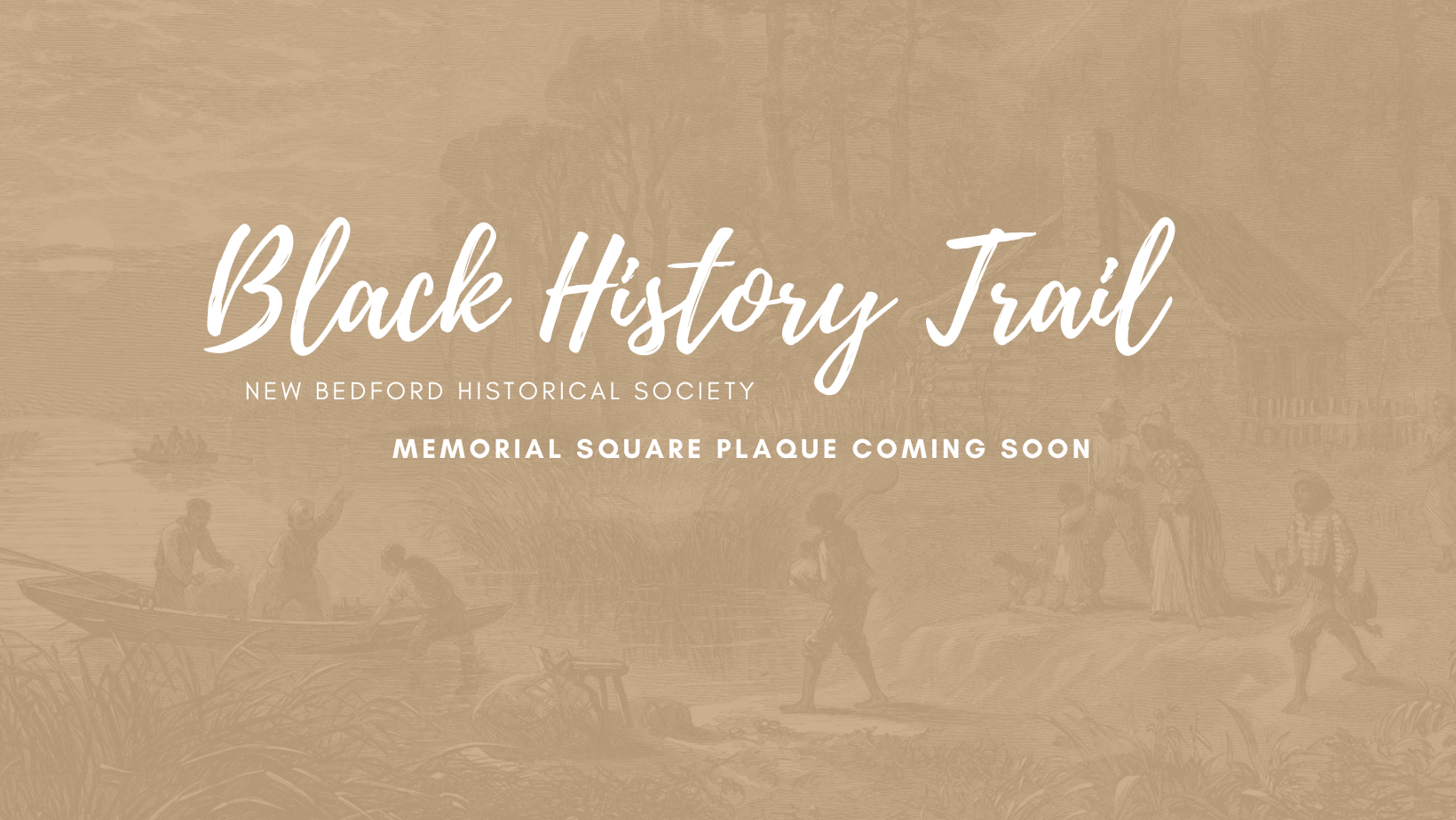
Memorial Square Plaque – Cedar and Kempton Streets
Installed in 1980 by the Twentieth Century Club, Inc., this plaque marks the center of what was once a thriving African American neighborhood and memorializes those men and women of color who contributed to the civic, cultural, and social life of the community.

New Bedford Chapter, NAACP – 95 Cedar Street
The oldest civil rights organization in New Bedford, the local chapter of the National Association for the Advancement of Colored People, was organized in 1917, eight years after its parent organization was founded. This building was constructed in the early 1970s and featured a plaque in memory of Frederick Douglass in its front hall.h is a mural depicting the history of the A.M.E. Church in America.

New Bedford Home for the Aged – 396 Middle Street, corner of Chancery Street
The daughter of Virginia slaves, Elizabeth Carter Brooks was born in New Bedford in 1867, four years after her mother, who had been sent North for education, settled in the city. A dedicated public schoolteacher, Brooks, with the support of the Women’s Loyal Union, founded the New Bedford Home for the Aged in 1897. It was the first organized home for the elderly in New Bedford and accepted residents without regard to race or religion. Brooks was the fourth president of the National Association of Colored Women’s Clubs (1908-12) and married Bishop William Sampson Brooks of the AME church in 1930. She died in New Bedford in 1951. The current structure, constructed and opened in 1908, still serves its original purpose.
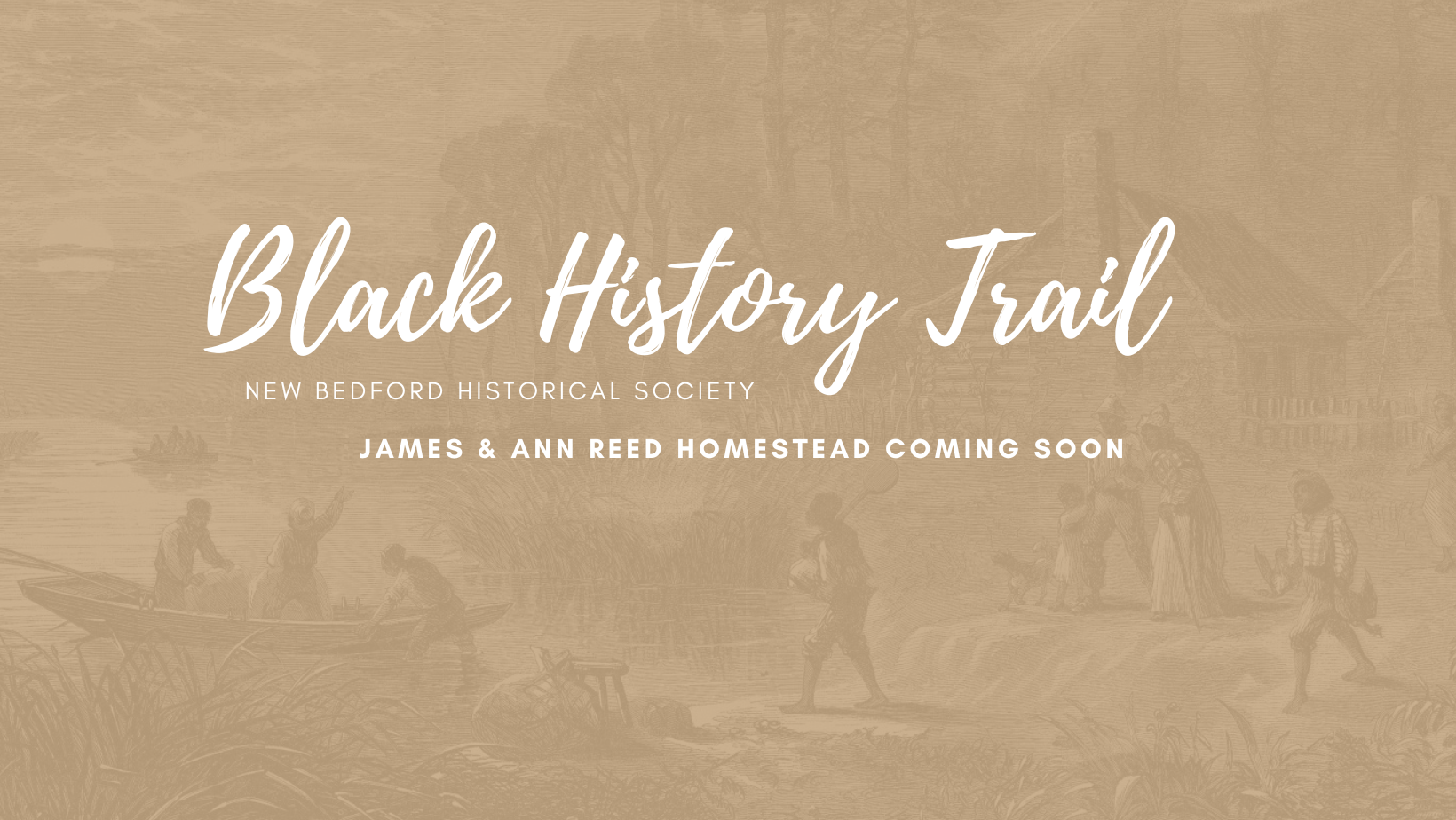
James and Anna Reed House – 172 Arnold Street
One of two octagon houses in New Bedford, this 1866 dwelling was occupied by the family of African American photographer James Reed and his family for 101 years. Reed worked as a photographer in the city from 1880 to 1914; his wife, Anna Jourdain Reed, studied at the Swain School of Design (now part of the University of Massachusetts, Dartmouth) and undertook the hand tinting and coloring of her husband’s portraits and landscapes. She also painted Tiffany-style lampshades for the Pairpoint Company of New Bedford. Mrs. Reed was a granddaughter of Underground Railroad activist William Bush and of Surinam native Anthony G. Jourdain, who settled in New Bedford by 1836 and was a fashionable hairdresser in the city for twenty years. The house remained in the Reed family until 1991 and is still a private residence.

Martha and Henry Onley House – 147 Smith Street
Built by Virginia natives Martha Faggins (1828-1903) and Henry Joseph Onley in 1850 , this home has long been a focal point of the African American community. The Onleys, who appear to have settled in New Bedford in the late 1840s, may have been escaped slaves. In 1841 Mrs. Onley’s sister, Lucy, was brought as a slave to New Bedford by the daughter and son-in-law of sea captain Joseph Dunbar. Several Boston court cases in the 1830s established that any slave brought into Massachusetts by an owner was automatically free. In a prolonged and acrimonious confrontation, local black and white abolitionists helped Lucy claim her freedom. She later married former slave Isaac Henson, lived in Boston for most of the 1840s, and in 1850 returned to New Bedford, where she remained until her death in 1891. She and the Onleys helped organize Salem Baptist Church, founded in 1868 by the Reverend William Jackson and 90 former members of the Second Baptist Church. And at this home the Martha Briggs Literary Society was formed in 1939.
For forty years the Olney’s grandson, Charles Dudley Only, used the house as a funeral home, and it passed from family ownership in 1981.

Reverend William Jackson House – 198 Smith Street – Private Residence
Believed to be the first African American officer commissioned in the U. S. Army, the Rev. William Jackson (1818-1900) served as the chaplain of the Fifty-fifth Regiment of the Massachusetts Volunteer Infantry during the Civil War. A native of Norfolk, Virginia, and a trained mariner, Jackson came to New Bedford as an ordained Baptist minister from Philadelphia, where he had been jailed for assisting in the release of the fugitive slave William Taylor. In Philadelphia he had known Underground Railroad “conductor” William Still, and Still may have sent fugitives to Jackson’s care in New Bedford; Jackson’s own diaries document his work in this regard. Called to the ministry of New Bedford’s Second Baptist Church in 1855, Jackson led some 90 members of that congregation into Salem Baptist Church in 1858 and remained its pastor until appointed the Fifty-fourth’s, and later the Fifty-fifth’s, chaplain in 1863.

Onley Square – Smith and Liberty Streets
This square, sponsored by the Twentieth Century Club of New Bedford, is dedicated to Henry Powell Onley and John Adams Onley, the first men of color to leave New Bedford to serve in World War I. African Americans Claude M. Ellis, Raymond Barboza, and Otis John Quinn also served overseas during t his conflict.

Elizabeth Carter Brooks Elementary School – 212 Nemasket Street
Built in 1857, this was the first school in New Bedford to be named for an African American. Elizabeth Carter Brooks taught at the William H. Taylor School in New Bedford’s North End for more than 25 years .

Monument to Black Service Men and Women – Rockdale Avenue and Court Street – Entrance to Buttonwood Park
Dedicated in 1976 in Buttonwood Park, this monument honors all men and women of color who served in the armed forces of this country.

Attorney Alfred J. Gomes Elementary School – 286 South Second Street
Built in 1977, this is the first city school to be named for a local Cape Verdean. Born in Brava, Alfred J. Gomes (1897-1974) was valedictorian of New Bedford High School and a 1923 graduate of the Boston University Law School. He practiced law in New Bedford for 47 years. In 1942 Gomes organized the Cape Verdean Relief Fund, which sent $25,000 [Hayden has $40,000] to the islands during a prolonged famine. He vigorously promoted the interests of the city’s Cape Verdean youth and was an active member of the NAACP.
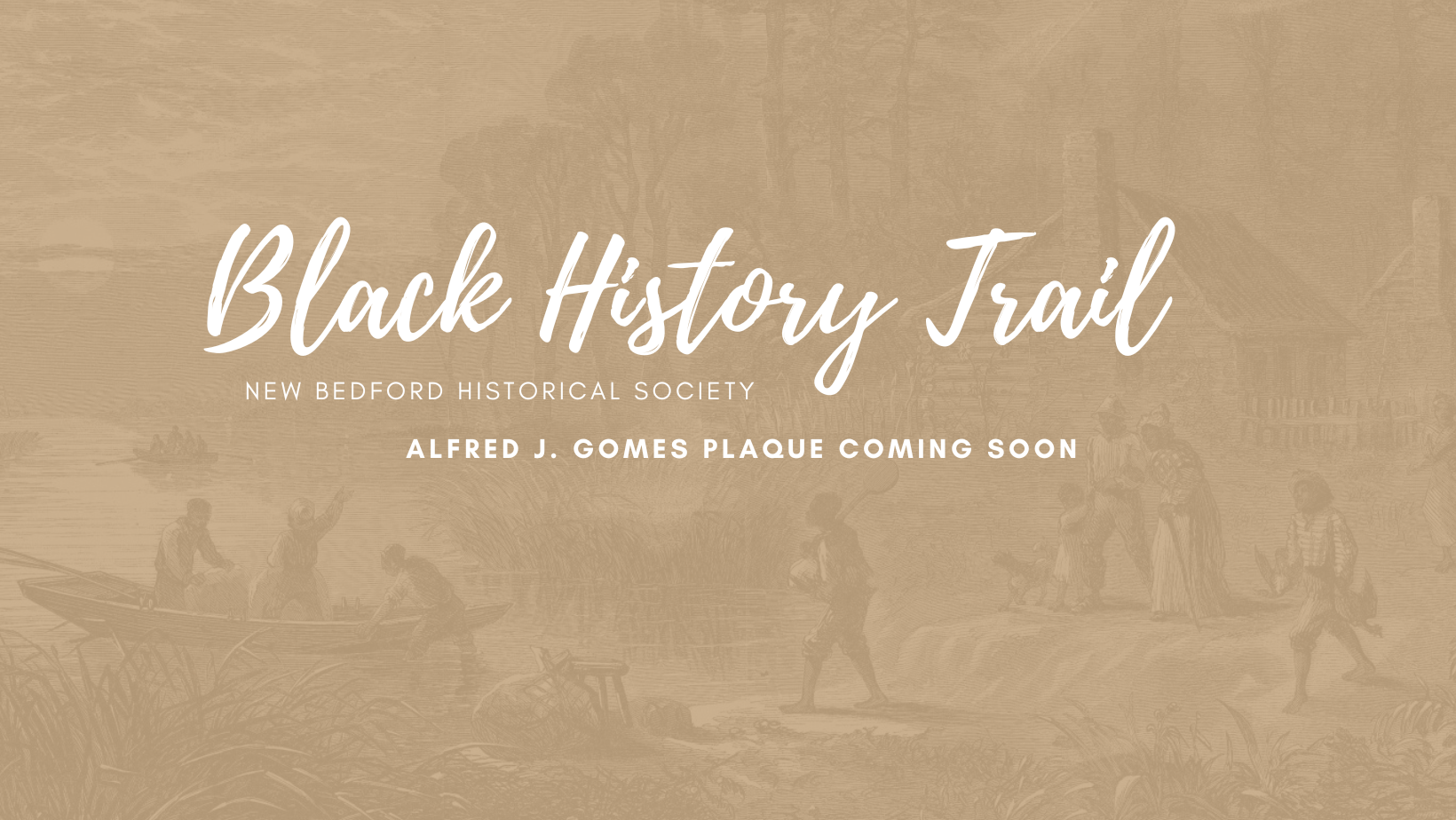
Attorney Alfred J. Gomes Plaque – Market Street
This plaque honoring Gomes’s contributions to the community ws put in place in 1975 by the Cape Verdean-American Veterans Association, Inc.
Attorney Alfred J. Gomes House
453 Cottage Street near Willis Street – Private Residence
Alfred J. Gomes lived in this house, built in 1887, from 1934 to 1973. It remains a private residence.

Memorial Square Cape Verdean American Vets – County and Washington Streets
Dedicated in November 1970, this monument honors all veterans of Cape Verdean descent who served in American wars.

Sunshine Ramos Square – Pleasant and Russell Streets
This square commemorates Antonio Francisco Ramos (1884-1970), who, for many years, put up the American flag each day at the Fifth Street School. The school may have been the first in the United States to raise the American flag.
It was on the southwest corner of Russell and Fifth Street (Now Pleasant Street). Antonio Francisco Ramos, nicknamed “Sunshine” was a patriot who dedicated part of his life to raising the American Flag at the Fifth Street School.
The plaques and signs above are all on the Corner of Russell and Pleasant Streets in New Bedford, Ma.
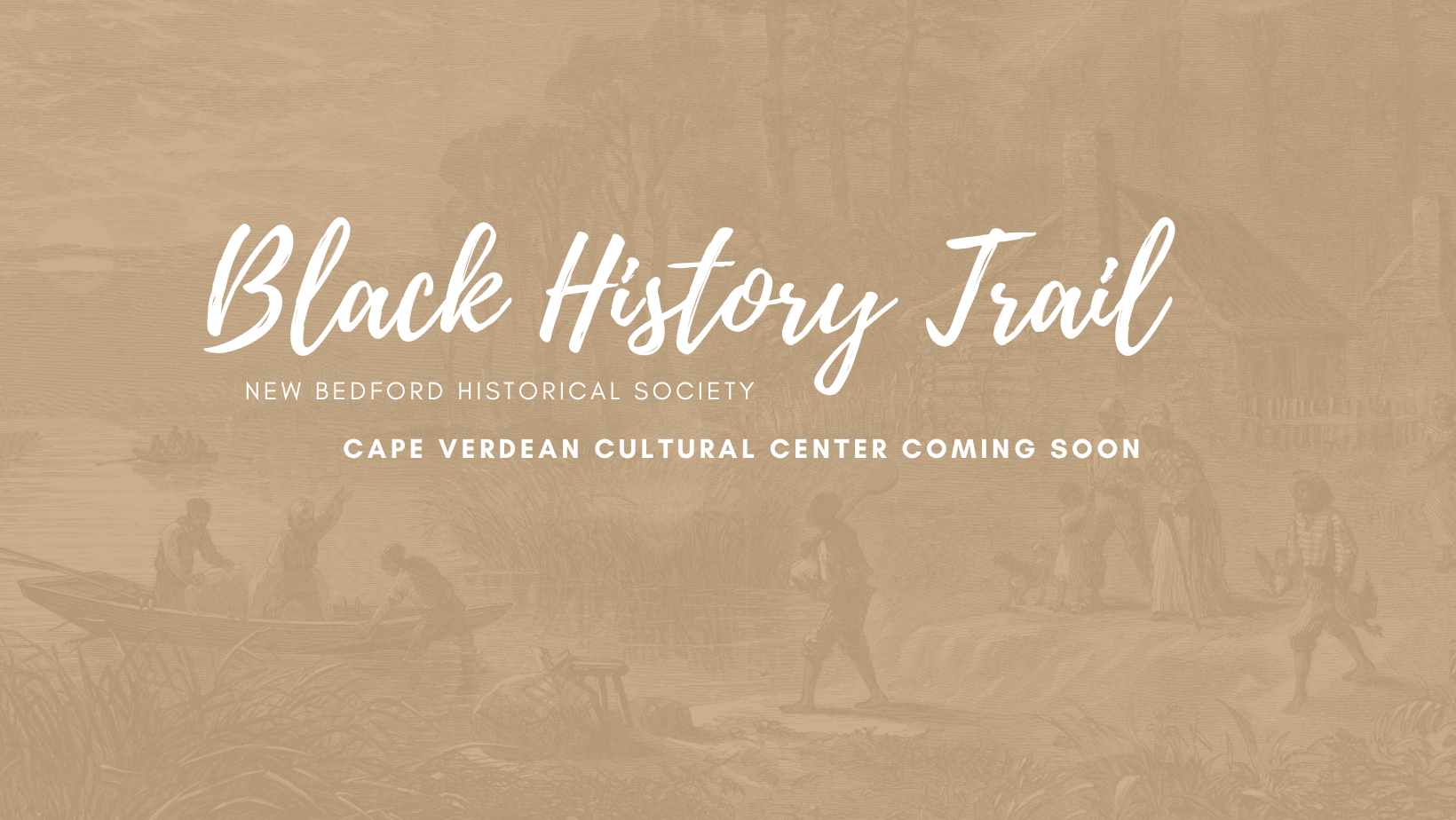
Cape Verdean Cultural Center – 120 Acushnet Avenue
Dedicated to preserving and interpreting Cape Verdean history and culture, the center was founded in 1973 by John P. “Joli” Gonsalves. Gonsalves was an expert in Cape Verdean music and folklore and a practicing musician. He began his career as a singer and percussionist with the Cape Verdean All-Stars, which in 1947 became the first Cape Verdean orchestra to go on national tour. In the 1950s he toured the country as part of the Harry Belafonte Folkloric Singers. In the 1950s and 1970s he worked in New Bedford radio as a newscaster and the host of a jazz program, and from 1974 to 1980 he produced the radio show “The Cape Verdean.”

Our Lady of Assumption Church – 47 S. Sixth St. corner of Cherry Street
Organized in 1905, Our Lady of Assumption was the first predominantly Cape Verdean parish in the United States. At first, a migration of single people brought largely by whaling vessels, the movement of Cape Verdeans to this country grew substantially after 1900. By 1920, an estimated 23,000 had emigrated to the United States, between 80 and 90 percent of whom arrived through the port of New Bedford. The building congregation now occupies on this site was built in 1957.

Cape Verdean Seamen’s Monument – Sixth and Madison Streets
This monument honors all New Bedford mariners of Cape Verdean descent and was dedicated in 1977. In 1765 whaling vessels first anchored in Cape Verdean ports to take on provisions, and at least as early as the 1820s whaling captains began to recruit Cape Verdeans to fill out crews thinned by desertions, illness, and death. Before 1855 at least twenty Cape Verdeans, only one of them a woman, had settled in New Bedford. Yet the bulk of emigration from these islands occurred in the years around 1900, as repeated and prolonged famine impelled many to leave. Cape Verdeans made up an increasingly large share of whaling crews in the industry’s last decades, and many also worked as laborers on the wharves and in the region’s cranberry harvest. From about 1892 into the mid-1960s Cape Verdean entrepreneurs purchased many old whaling and other vessels and refitted them as packet boats to carry supplies to the islands and emigrants and visitors to the United States.

Sociedade Building and Monument -1993 Acushnet Avenue
Founded in 1916 by Filipe Nicolau Soares, its first president, the Sociedad Building is the headquarters of the Cape Verdean Beneficent Association, the oldest Cape Verdean benevolent association in the United States.
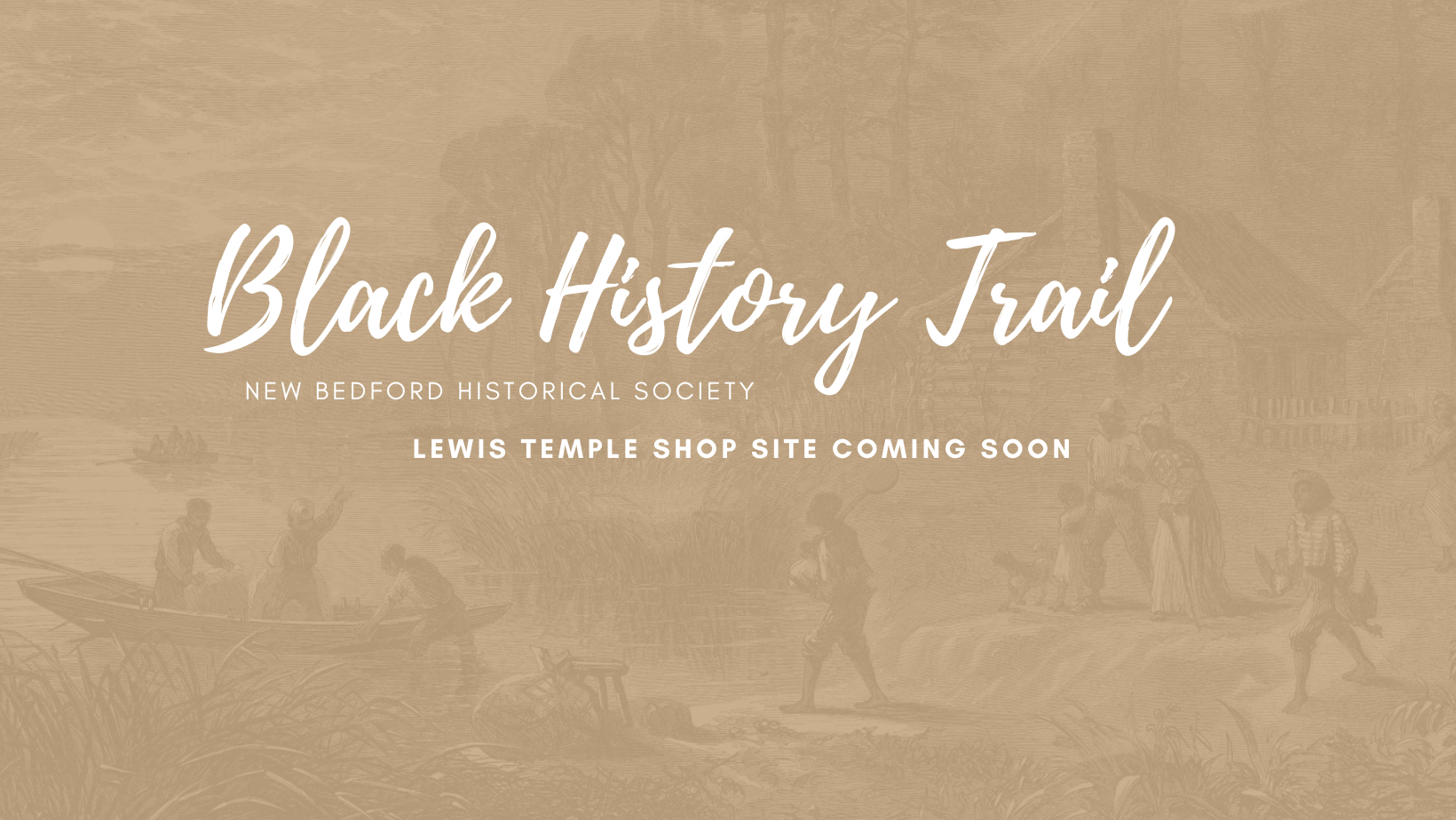
Lewis Temple Shop Site – Walnut Street and Coffin’s Wharf
The shop in which Lewis Temple invented the Temple toggle iron stood at the foot of Walnut Street at this junction with Coffin’s Wharf from at least as early as 1836 until 1854. By 1849 Temple and his family had moved from Bedford Street to a house attached to this shop.
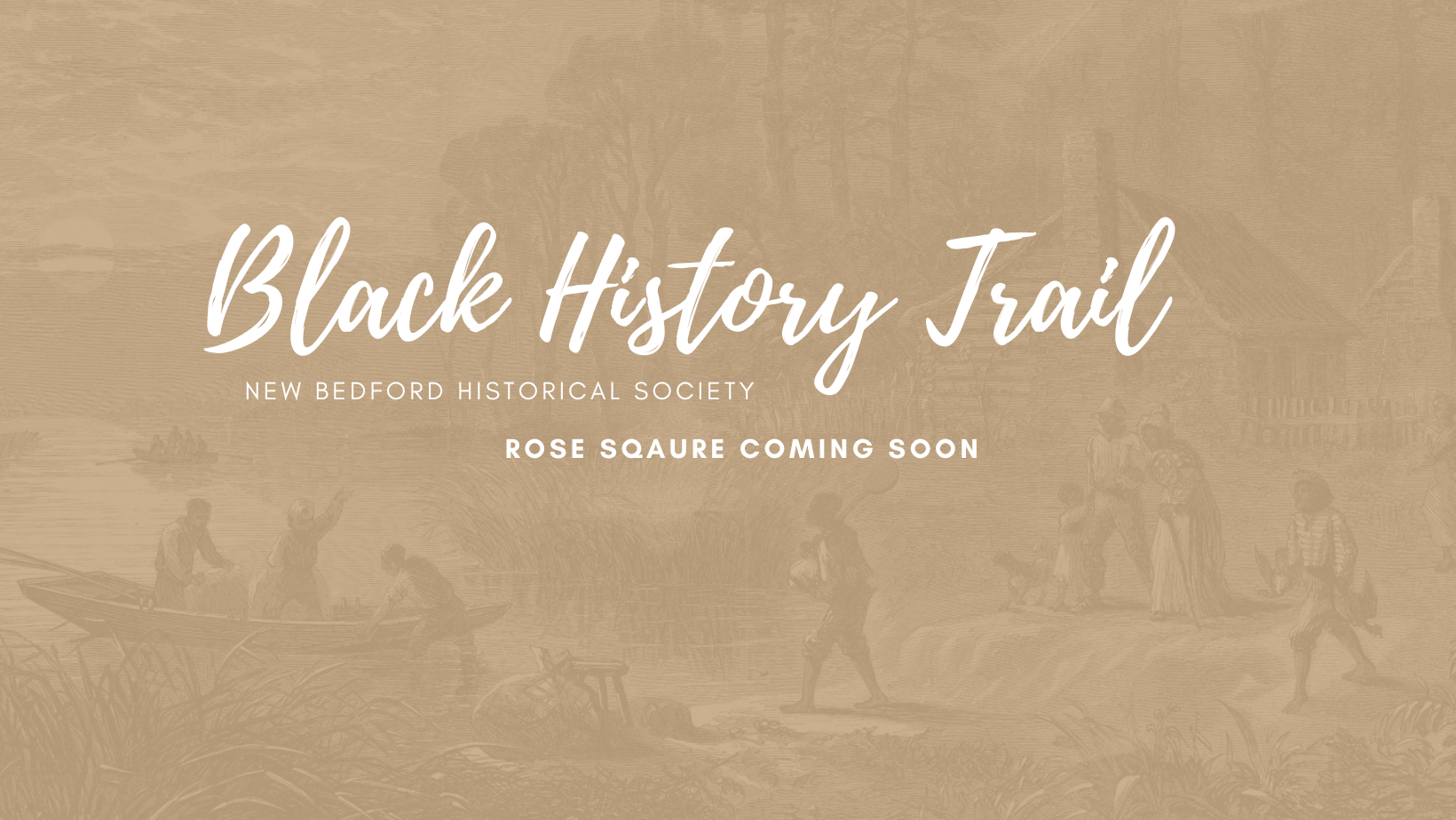
Rose Square -Acushnet Avenue and Walnut Street
In July 1986 the Cape Verdean American Veterans [Cape Verdean Veterans Association in Hayden] dedicated this square to Sergeant Albert Rose (1917-45), who died in action in Italy on 5 February 1945.
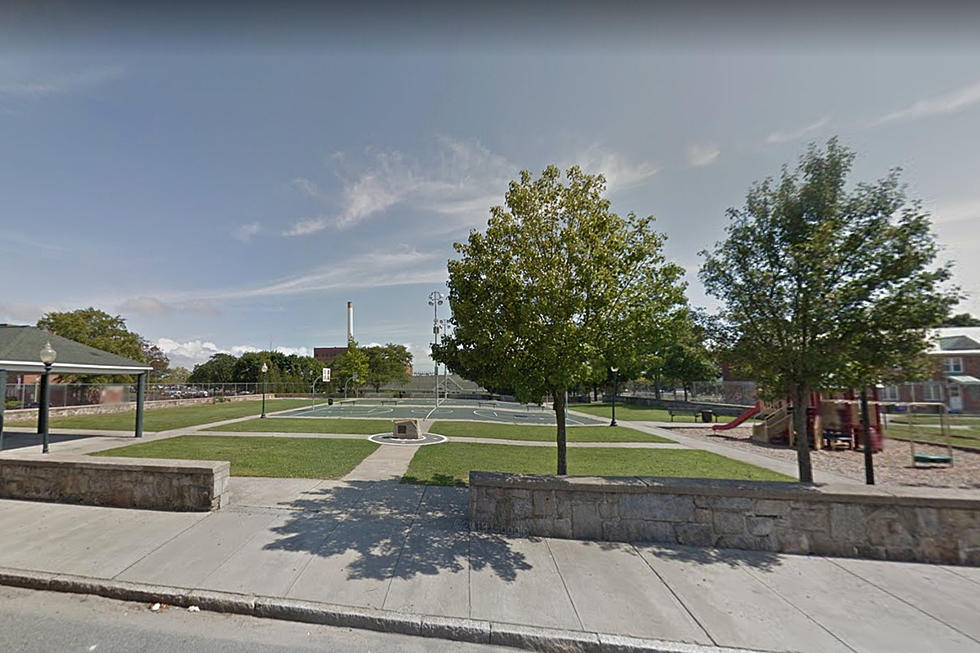
Monte Playground – Acushnet Avenue and Manuel E. Costa St. Way
Once the site of the city’s vocational school and still in the heart of its Cape Verdean community, this playground was dedicated in November 1938 to Joseph J. Monte, a World War I veteran and, in 1935, one of the first people of Cape Verdean descent to win the Purple Heart. A monument to Monte stands at the playground’s entrance. The Cape Verdean American Veterans and the American Legion developed the facility.
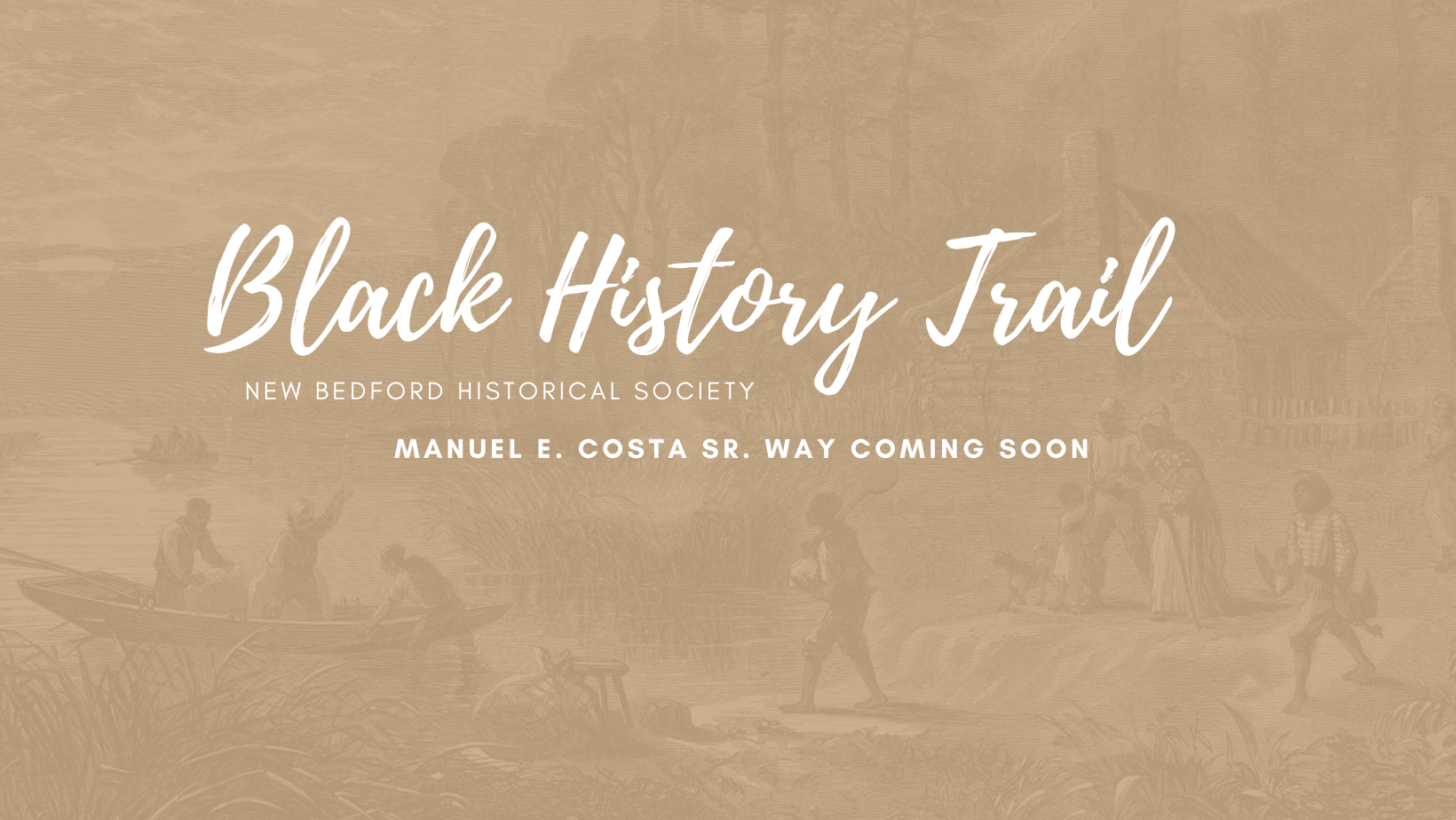
Manuel E. Costa Sr. Way – Acushnet Avenue near Monte’s Playground
Manuel E. “Manny” Costa Sr. (1918-92) was a local leader in the civil rights movement since the 1940s and most notably during the tumultuous 1960s and 1970s. A graduate of and leading athlete at Brown and Lincoln Universities, Costa coached and guided many of the city’s young people in the 1940s and 1950s and became a steadfast advocate for the needs of underprivileged and low-income residents of New Bedford. In 1968 Governor John Volpe named him to represent greater New Bedford on the Governor’s Human Rights Task Force, and two years later he was named director of the New Bedford Human Rights Commission. He has also been recognized by the government of Cape Verde for his successful role in the struggle for the islands’ independence from Portugal in the 1970s. The City of New Bedford renamed Cannon Street near Monte’s Playground “The Manuel E. Costa Way”. This section of Acushnet Avenue was dedicated to Costa on 5 July 1998, Cape Verdean Recognition Day.
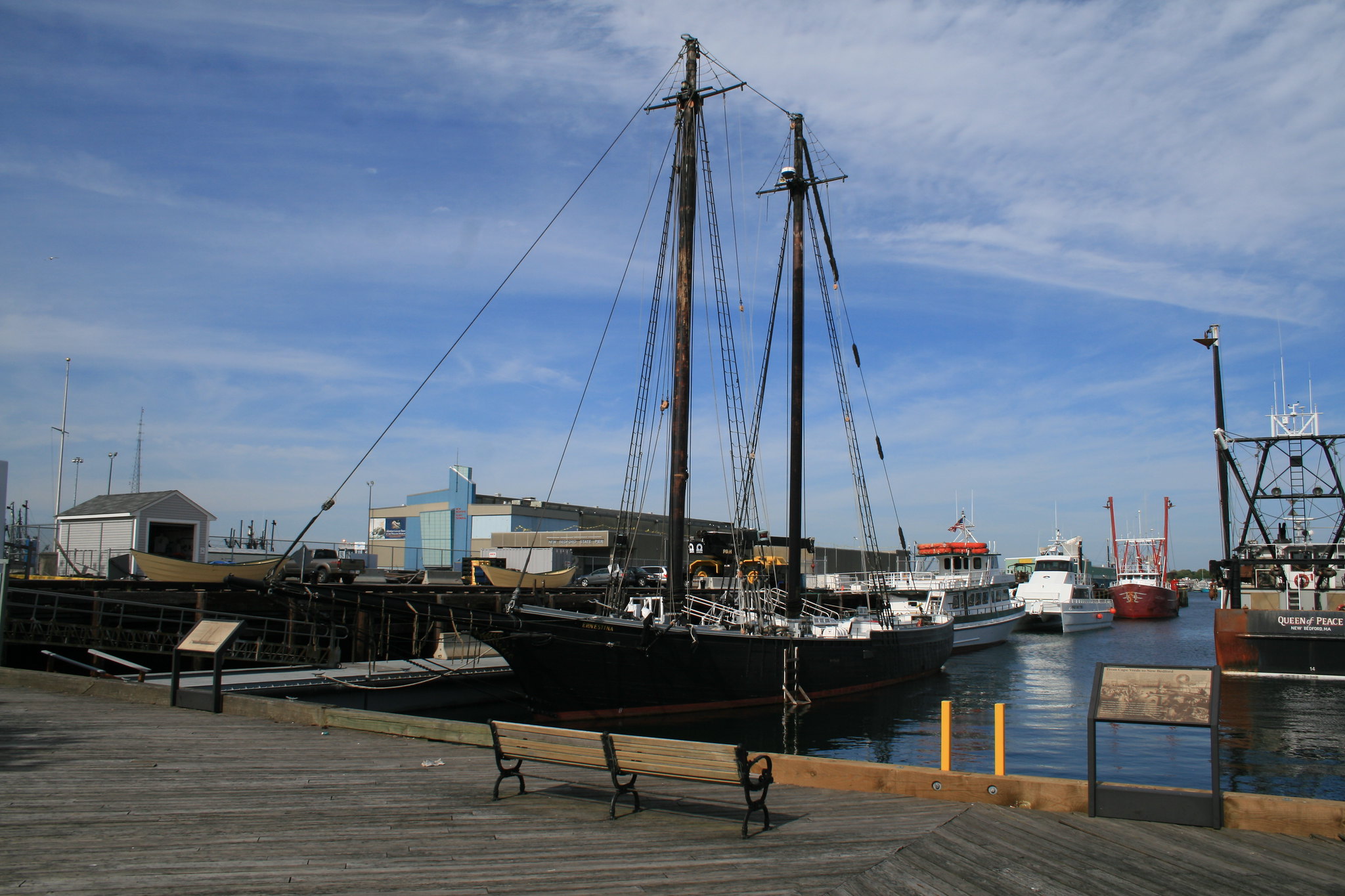
Schooner Ernestina Berthing – State Pier
When in its home port, the schooner Ernestina berths here. Built in 1894 in Essex, Massachusetts, as the Effie M. Morrissey, the 94-foot Ernestina is one of the oldest wooden sailing vessels afloat, one of the last surviving Gloucester fishing schooners, one of only two remaining vessels to have explored the Arctic under sail, and the last sailing ship in regular service to carry immigrants across the Atlantic to the United States. She was in fact the only vessel in the 1986 Operation Sail parade, commemorating the centennial of the Statue of Liberty, that had actually carried immigrants to this country.
The schooner served as a fishing vessel, bringing record catches of salt cod and haddock into Gloucester, until about 1914. By 1926 she had been purchased by Captain Robert Abram Bartlett (1875-1946), who had piloted Robert Peary’s Roosevelt during the explorer’s famed and controversial “dash” to the North Pole in 1909. Bartlett took the Morrissey on numerous exploratory voyages to the Arctic regions, often to collect specimens for American natural history museums. After Bartlett’s death, New Bedford mariner Henrique Mendes (his dates) purchased the schooner, renamed her for his daughter, and used her in the Cape Verdean packet trade—carrying passengers and freight between the islands and southeastern New England—from 1948 to 1965. Having crossed between the two countries 22 times, the Ernestina was the last vessel in the Cape Verdean packet trade. In 1982 the Republic of Cape Verde gave the vessel to the United States. The schooner, administered by the Schooner Ernestina Commission, is listed on the National Register of Historic Places and is devoted to multicultural education and sail training.
“We found ourselves surrounded by beds, bureaus, boxes, mattresses, dressers, chairs, tables, chickens, and barking dogs. . . . No one could actually believe that dozens of people had embarked on this voyage, with all their worldly possessions, in a ship past her prime having no radio, setting out to cross the Atlantic Ocean!”
—Frank Way, U.S. Coast Guard,
onboarding the Ernestina off Providence in 1958
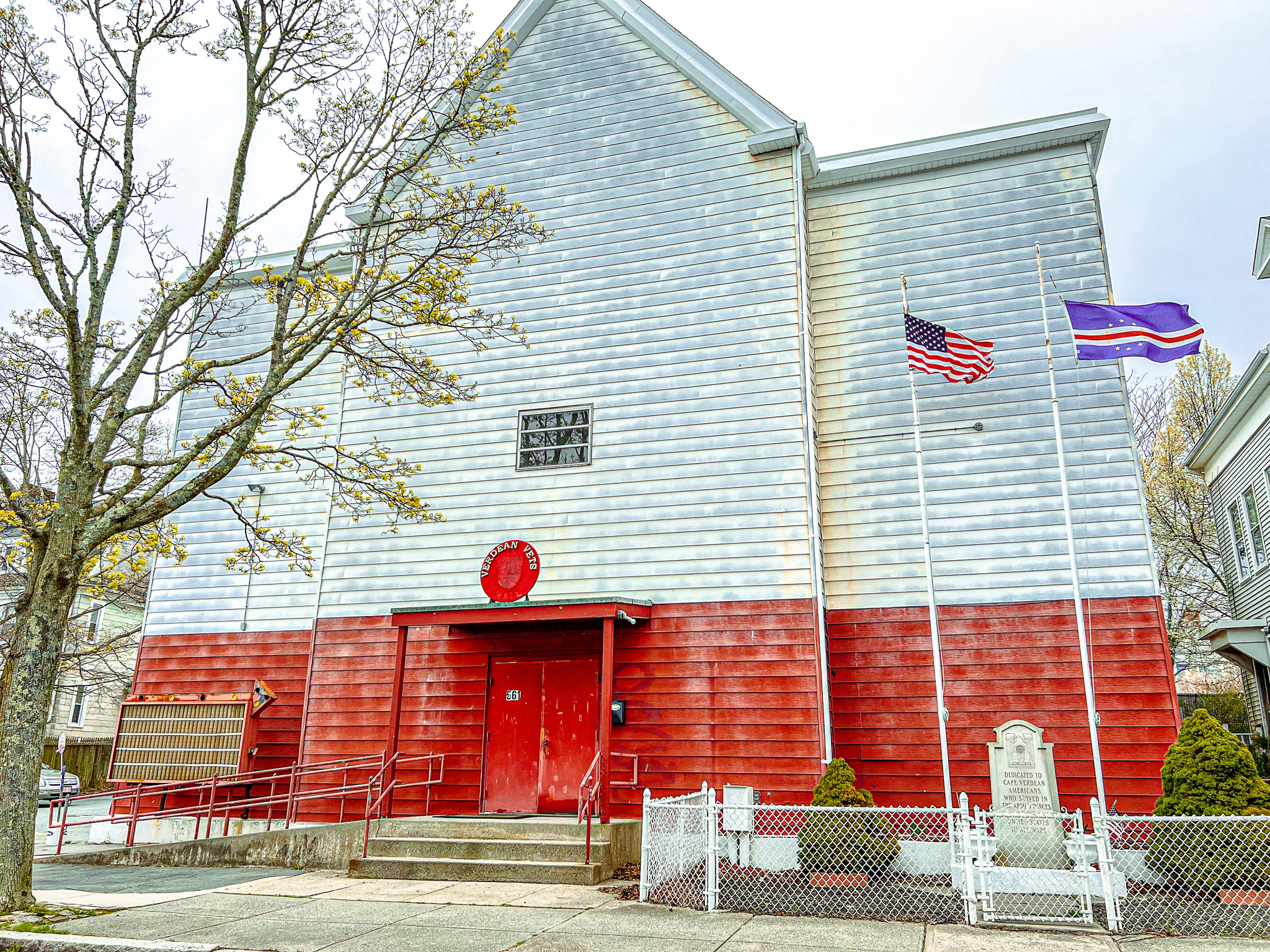
Verdean Vets Hall – 561 Purchase and Walnut Streets
Founded in 1946 for Cape Verdean Veterans, the Cape Verdean Veterans Foundation is the oldest such organization in the region. Every July it sponsors the Cape Verdean Recognition Day parade.

Monument To All Vets – 561 Purchase and Walnut Streets (Outside in the front of the building)
This monument is dedicated to all Cape Verdean Americans who served in all wars of the United States.

Honorable Rodney French Plaque – West Rodney French Boulevard, at Hazelwood Park
In 1934, the African American citizens of New Bedford funded and erected the first monument on this site to Rodney French , a staunch opponent of slavery and defender of fugitive slaves who served as mayor of New Bedford in 1853 and 1854. After vandals removed the original plaque in 1983, the schoolchildren of New Bedford raised funds necessary to replace it.

Gravesite of Bishop Charles M. Grace – Pine Grove Cemetery, 1100 Ashley Blvd.
After Bishop Grace’s death in 1960, the congregants of the United House of Prayer for All People built this mausoleum in his memory.
Digitally Curated By: Mansa Consulting, Inc.





